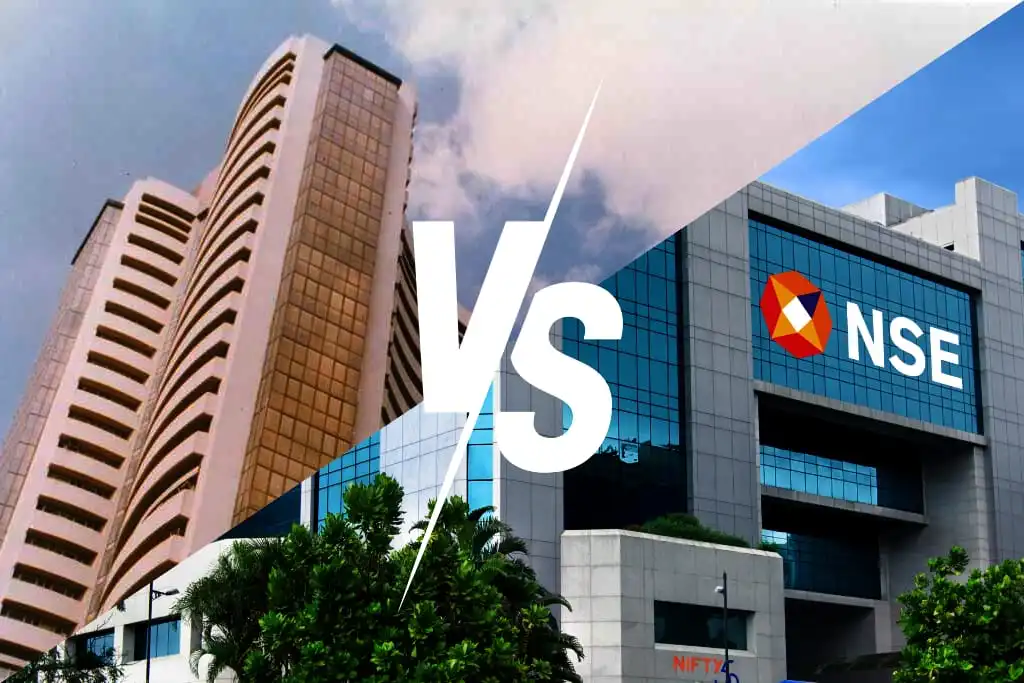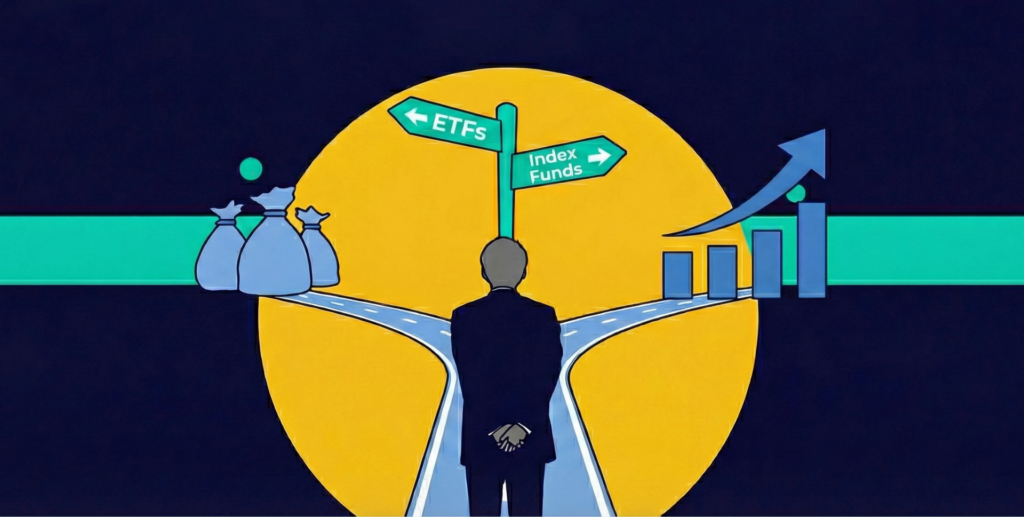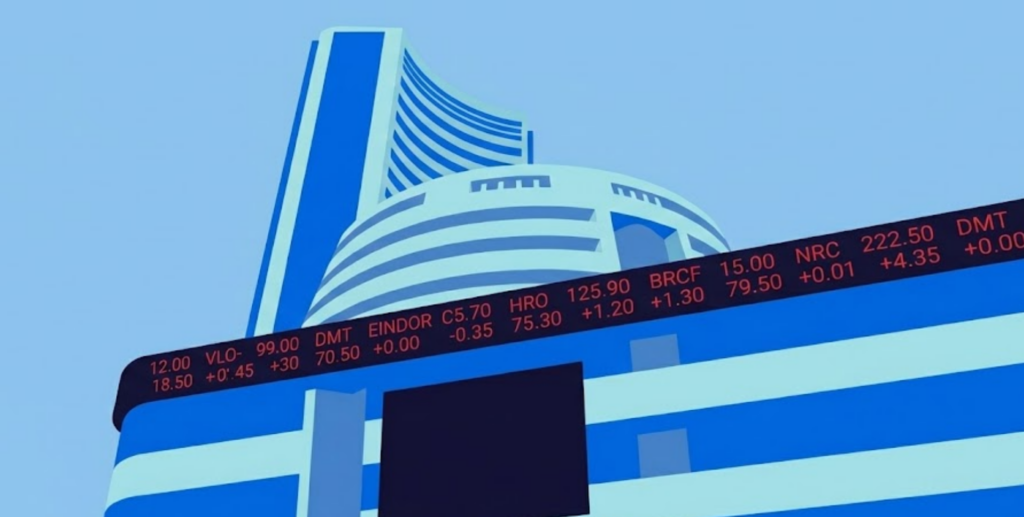Quick Summary
- Stock Index: A stock index is a statistical measure that tracks the performance of a specific group of companies. It represents a market or sector’s performance.
- Sensex: Launched in 1986, Sensex is India’s oldest stock market index, representing 30 top companies on BSE. It is calculated using the free-float market capitalisation method.
- Nifty: Introduced in 1996, Nifty tracks the performance of 50 major companies listed on the NSE, offering a broader sectoral representation and covering about 65% of the exchange’s market cap.
- Sector Representation: Sensex is more concentrated with fewer sectors, while Nifty provides a more diverse representation of industries, making it a broader indicator of India’s economy.
- Market Impact: Both indices have significant impacts on investor sentiment, with Nifty often offering a more comprehensive outlook due to its inclusion of 50 companies.
- Comparison to US Indices: While Sensex and Nifty focus on India’s top companies, US indices like the S&P 500 and NASDAQ cover a broader range of sectors and provide a global market view.
Continue reading to know more about the difference between nifty and Sensex and why it matters!
What is a Stock Index?
A stock index is a carefully selected group of companies representing a financial market segment. It is a statistical measure to track a specific market or sector’s overall performance and price movements.
Indices typically include well-established companies from various industries, providing a snapshot of the broader economy’s health. Examples of prominent indices include the S&P 500, Dow Jones Industrial Average, and the Sensex and Nifty in India.
What is Sensex?
Sensitive Index (Sensex) is the BSE’s flagship benchmark. Introduced in 1986, it is India’s oldest stock market index and tracks the performance of 30 financially sound and well-established companies listed on the BSE.
These companies are selected based on market capitalisation, trading frequency, liquidity, industry representation, and average daily turnover. The Sensex is a key indicator of the Indian stock market’s overall health and direction.
Calculated using the free-float market capitalisation method, the Sensex has a base value of 100 with the base year of 1978-79. It reflects the market value of its 30 constituent stocks relative to this base period.
How is Sensex Calculated?
The Sensex uses a free-float market capitalisation method, similar to the Nifty. This approach considers only the shares available for public trading, providing a more accurate representation of the market’s movements. Let’s break down the calculation process into simple steps:
First, the market capitalisation of each of the 30 Sensex companies is calculated by multiplying the total number of a company’s outstanding shares by its current market price.
Market Capitalisation = Outstanding Shares x Price
Next, the free-float market capitalisation is determined. The free-float factor represents the proportion of freely available shares for trading, excluding those held by promoters, governments, or other long-term holders.
Once the free-float market capitalisation is calculated for all 30 companies, these values are added together to get the total free-float market capitalisation of the Sensex.
The final step is to calculate the Sensex value using this formula:
Sensex = (Free-float market cap of all 30 companies / Base market cap) × Base value of the Index
What is Nifty?
National Stock Exchange Fifty (Nifty) is India’s National Stock Exchange (NSE) benchmark stock market index. Launched in 1996, it tracks the performance of 50 of the largest companies on the NSE.
These companies span 24 different sectors, representing about 65% of the exchange’s total free-float market capitalisation. This makes the Nifty a broad indicator of India’s economic health and stock market performance.
Companies must meet specific criteria related to liquidity, float adjustment, and domicile to be included in the Nifty index. The index can be calculated using a free-float market method with a base value 1000.
How is Nifty Calculated?
The Nifty calculation starts with determining the market capitalisation of each company in the index. This is done by multiplying the amount of outstanding shares by the current market price of each share.
Market Capitalisation = Outstanding Shares x Price
However, not all of these shares are considered in the Nifty calculation. The Nifty uses a concept called free-float market capitalisation to get a more accurate picture of the shares available for public trading. This excludes shares held by certain entities like trusts, governments, and company promoters.
To calculate this, an Investable Weight Factor (IWF) is applied to each company’s market capitalisation. The IWF represents the percentage of shares that can be freely traded in the market.
Free-float market Capitalisation = Market capitalisation x IWF
Once the free-float market capitalisation of all 50 companies is determined, these values are added together to get the current market value of the entire index.
The final step is to determine the index value using this formula:
Index Value = (Current Market Value / Base Market Capital) x 1000
What is the Difference Between Sensex and Nifty?
While both indices track the top companies in the country, they have distinct characteristics, such as:
| Parameter | Sensex | Nifty |
| Number of Companies | 30 | 50 |
| Stock Exchange | Bombay Stock Exchange (BSE) | National Stock Exchange (NSE) |
| Historical Performance | Long-standing index with over 40 years of data | Comprehensive index with over 25 years of data |
| Returns | Generally similar to Nifty but can vary | Usually identical to Sensex but can vary |
| Charts | Sensex charts available on BSE platforms | Nifty charts available on NSE platforms |
| Sectoral Representation | Less diverse with fewer companies | More diverse with a broader range of sectors |
| Index Calculation Methodology | Free-float market capitalisation method | Free-float market capitalisation method |
| Significance | Benchmark index for BSE reflects market trends | Benchmark index for NSE reflects market trends |
| Impact on Indian Stock Market | Significant impact on investor sentiment | Significant effect on investor sentiment |
Comparing Nifty and Sensex vs US Indices
Investing in India’s Nifty and Sensex indices can be a solid strategy for building wealth. But, expanding your portfolio to include US stocks and indices helps reduce risk through geographical diversification and opens up opportunities for potentially higher returns.
Let’s explore more about how the Indian and US stock markets compare and why considering both might be a smart move.
Overview of US Indices
The United States boasts some of the world’s most well-known and influential stock market indices, including:
- The DJIA, often called “the Dow,” tracks 30 large, publicly-owned companies listed on US stock exchanges. Despite its relatively small number of constituents, it’s widely followed due to its long history and the prominence of its component companies.
- The S&P 500 is broader, encompassing 500 of the largest US companies. It’s considered by many to be the most representative measure of the overall US stock market due to its wider coverage.
- The NASDAQ Composite Index is majorly weighted towards tech companies and includes over 3,000 stocks listed on the NASDAQ exchange. Its tech-heavy composition makes it a key indicator of the performance of the US technology sector.
Also Read: https://appreciatewealth.com/blog/nasdaq-vs-nifty-a-detailed-comparison
Market Composition and Representation
When comparing Indian and US indices, one of the most striking differences is in their size and composition. The Nifty 50 and Sensex 30 include 50 and 30 companies, respectively, representing India’s largest and most liquid stocks. In contrast, the S&P 500 includes 500 companies, offering a much broader representation of the US market.
Performance and Historical Returns
Both markets have shown strong long-term growth but with different patterns and drivers. For example, Indian indices like the Nifty and Sensex have delivered impressive returns over the years, fueled by India’s rapid economic growth, expanding middle class, and increasing global integration. However, they’ve also experienced periods of high volatility, often influenced by factors such as regulatory changes, political events, and global economic shifts.
In contrast, US indices—particularly the S&P 500 and NASDAQ—have shown robust long-term performance, benefiting from the country’s innovation-driven economy and global market leadership in sectors like technology. The US market’s depth and liquidity have also contributed to its resilience during global economic challenges.
Investment Opportunities
The differing characteristics of Indian and US indices create diverse investment opportunities. Investing in Nifty and Sensex offers exposure to India’s growth story, including its expanding consumer market and developing infrastructure. These indices can be attractive for investors seeking high growth potential, albeit with higher volatility.
US indices, on the other hand, provide access to a mature, globally influential market. They offer exposure to multinational companies with worldwide operations, potentially providing a degree of global diversification even within a single market. The US market’s depth also allows for more specialised investment strategies, such as sector-specific or factor-based approaches.
Conclusion
When choosing between Sensex and Nifty for investment purposes, it ultimately depends on your investment goals and preferences. Sensex offers a concentrated view of 30 leading companies on the BSE, while Nifty provides a broader perspective by tracking 50 companies on the NSE, offering more sectoral diversity. Both indices have their merits, and a diversified investment approach that considers both can be beneficial.
Moreover, for investors considering both markets, a balanced approach might involve allocating portions of a portfolio to both Indian and US indices. This strategy can help spread risk across different economic environments while capitalising on growth opportunities in both developed and emerging markets.
FAQs on Nifty & Sensex
What is the basic difference between Sensex and Nifty?
The basic difference between Sensex and Nifty lies in the number of companies they track and the stock exchanges they represent. Sensex tracks 30 companies listed on the Bombay Stock Exchange (BSE), while Nifty tracks 50 companies listed on the National Stock Exchange (NSE).
How do Nifty and Sensex work?
Both Nifty and Sensex work as benchmark indices that measure the performance of the top companies listed on their respective stock exchanges. They use the free-float market capitalisation method to calculate the index value, which reflects the market performance of the selected companies.
Is Sensex better than Nifty?
Whether Sensex is better than Nifty depends on the investor’s perspective and investment goals. Sensex offers insights into 30 major companies on the BSE, while Nifty provides a broader view by tracking 50 companies on the NSE, offering more sectoral diversity.
Which is older, the Sensex or the Nifty?
Sensex is older than Nifty, which was established in 1986. Nifty, on the other hand, was introduced later in 1996.
How do you read Sensex and Nifty?
To read Sensex and Nifty, observe their index values, which indicate the overall performance of the selected companies. A rising index value suggests a bullish market trend, while a falling value indicates a bearish trend.
What is the full form of Sensex?
The full form of Sensex is the “Stock Exchange Sensitive Index.” It represents the 30 most significant stocks traded on the Bombay Stock Exchange (BSE).
How many stocks are in Sensex?
Sensex comprises 30 stocks. These stocks are selected according to their market capitalisation, liquidity, and industry representation.
How many stocks are in Nifty?
Nifty includes 50 stocks. These stocks are chosen to represent the performance of the top companies on the National Stock Exchange (NSE), covering a wide range of sectors.























